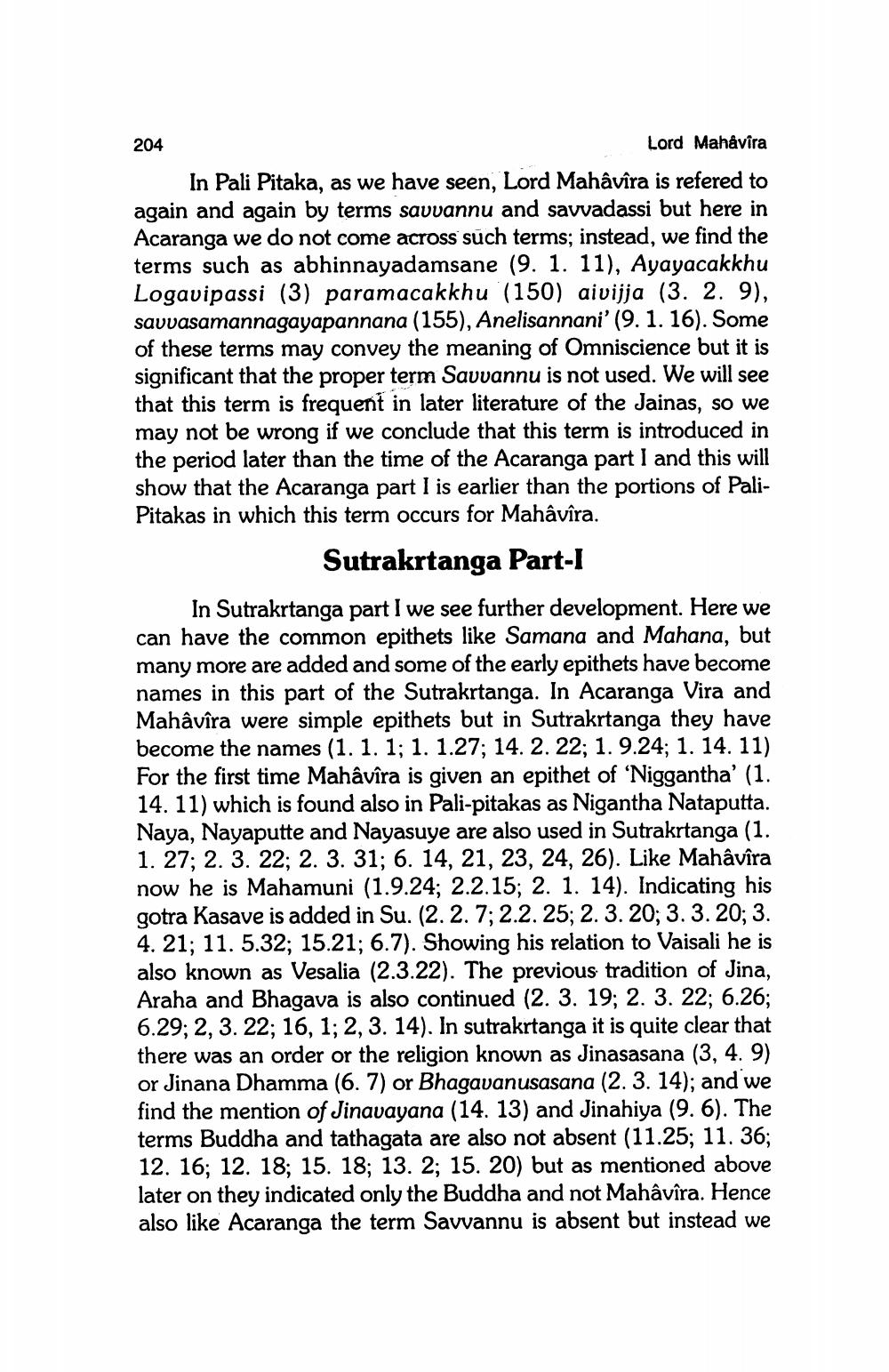________________
204
Lord Mahavira In Pali Pitaka, as we have seen, Lord Mahâvîra is refered to again and again by terms savvannu and savvadassi but here in Acaranga we do not come across such terms; instead, we find the terms such as abhinnayadamsane (9. 1. 11), Ayayacakkhu Logavipassi (3) paramacakkhu (150) aivijja (3. 2. 9), savvasamannagayapannana (155), Anelisannani' (9.1. 16). Some of these terms may convey the meaning of Omniscience but it is significant that the proper term Savvannu is not used. We will see that this term is frequent in later literature of the Jainas, so we may not be wrong if we conclude that this term is introduced in the period later than the time of the Acaranga part I and this will show that the Acaranga part I is earlier than the portions of PaliPitakas in which this term occurs for Mahâvîra.
Sutrakrtanga Part-I In Sutrakrtanga part I we see further development. Here we can have the common epithets like Samana and Mahana, but many more are added and some of the early epithets have become names in this part of the Sutrakrtanga. In Acaranga Vira and Mahâvîra were simple epithets but in Sutrakrtanga they have become the names (1. 1. 1; 1. 1.27; 14. 2. 22; 1.9.24; 1. 14. 11) For the first time Mahâvîra is given an epithet of 'Niggantha' (1. 14. 11) which is found also in Pali-pitakas as Nigantha Nataputta. Nava. Navaputte and Navasuve are also used in Sutrakrtanga (1. 1. 27; 2. 3. 22; 2. 3. 31; 6. 14, 21, 23, 24, 26). Like Mahâvîra now he is Mahamuni (1.9.24; 2.2.15; 2. 1. 14). Indicating his gotra Kasave is added in Su. (2.2. 7;2.2. 25; 2. 3. 20; 3. 3. 20; 3. 4. 21; 11. 5.32; 15.21; 6.7). Showing his relation to Vaisali he is also known as Vesalia (2.3.22). The previous tradition of Jina, Araha and Bhagava is also continued (2. 3. 19; 2. 3. 22; 6.26; 6.29; 2, 3. 22; 16, 1, 2, 3. 14). In sutrakrtanga it is quite clear that there was an order or the religion known as Jinasasana (3, 4. 9) or Jinana Dhamma (6.7) or Bhagavanusasana (2. 3. 14); and we find the mention of Jinavayana (14. 13) and Jinahiya (9. 6). The terms Buddha and tathagata are also not absent (11.25; 11. 36; 12. 16; 12. 18; 15. 18; 13. 2; 15. 20) but as mentioned above later on they indicated only the Buddha and not Mahâvîra. Hence also like Acaranga the term Savvannu is absent but instead we




